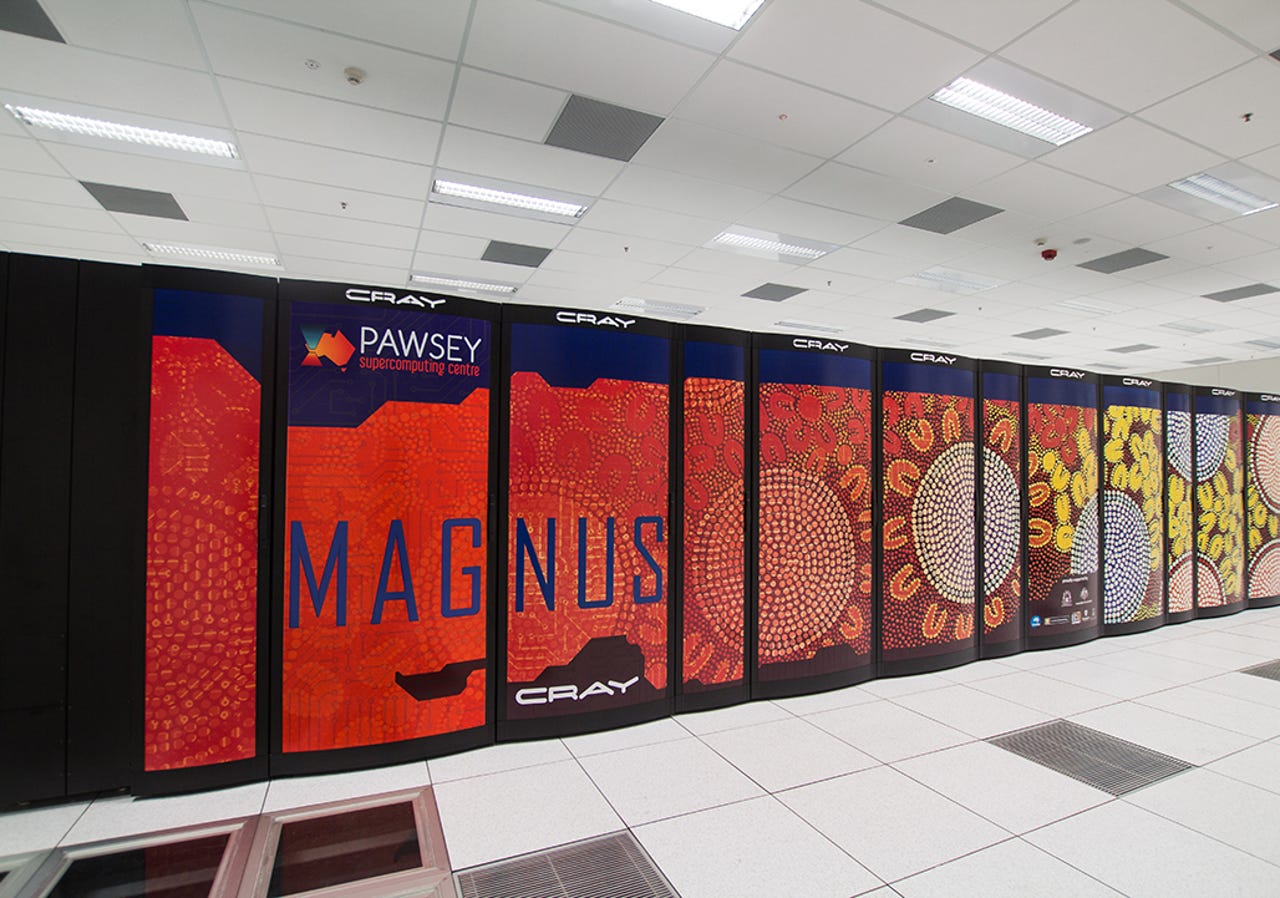Pawsey gets AU$70m to upgrade two supercomputing clusters


Magnus supercomputer
The Pawsey Supercomputing Centre in Western Australia has announced receiving AU$70 million in funding from the federal government.
The Pawsey centre is an unincorporated joint venture between the Commonwealth Scientific and Industrial Research Organisation (CSIRO), Curtin University, Edith Cowan University, Murdoch University, and the University of Western Australia.
It currently serves over 1,500 researchers from across Australia, involved in more than 150 supercomputing projects. Nine Australian Research Centres of Excellence also benefit from the Pawsey centre.
The multimillion-dollar injection will be used to replace the centre's Magnus and Galaxy supercomputers, which are both nearing their end of life.
Magnus is a Cray XC40 petascale system, which as of September 2016 was the most powerful public research supercomputer in the southern hemisphere. Magnus is supported by a smaller commodity cluster, Zeus, for pre/post-processing and visualisation, and Zythos, which is a partition within the Zeus cluster.
Galaxy is a Cray system with a similar architecture to Magnus, dedicated to supporting the operational requirements of the Australian Square Kilometre Array (SKA), Australian Square Kilometre Array Pathfinder (ASKAP), and the Murchison Widefield Array (MWA).
The $1 billion SKA is slated as the largest and most capable radio telescope ever constructed.
Comprised of 36 antennas working together as a single instrument, the ASKAP will capture radio images of the sky and allow astronomers to answer fundamental questions about the universe, such as the nature of cosmic magnetism and the evolution and formation of galaxies.
The ASKAP forms part of the SKA.
Similarly, the main goals of the MWA, a joint project between a group of international universities to build a low-frequency radio array operating in the frequency range 80-300 MHz, are to detect neutral atomic hydrogen emission from the cosmological Epoch of Reionization (EoR), to study the sun, the heliosphere, the Earth's ionosphere, and to study radio transient phenomena.
See also: In pictures: The world's 25 fastest supercomputers (TechRepublic)
"Today's announcement, together with last year's investment into the National Computational Infrastructure located in Canberra, will strengthen Australia's position in the global research environment and enable Australia to stay globally competitive," chair of the Pawsey Supercomputing Centre John Langoulant said.
The procurement process for the new systems is expected to begin immediately, with the intention of new infrastructure being available from 2019. Pawsey staff and researchers will also be involved in the procurement process, the centre said.
In addition to Magnus and Galaxy, the Pawsey Supercomputing Centre also houses Athena, which was provided by Hewlett Packard Enterprise-owned SGI in March last year.
Athena replaced the decommissioned Fornax cluster.
The Pawsey Supercomputing Centre earlier this month announced the signing of a memorandum of understanding with the National Supercomputing Centre (NSCC) of Singapore that will see both facilities work together on supercomputing, networking, data analytics, scientific software applications, and visualisation.
PREVIOUS AND RELATED COVERAGE
HPE's SGI scores AU$1.5m CSIRO supercomputing contract
SGI will be replacing the decommissioned Fornax system at the Pawsey Supercomputing Centre in Western Australia.
Medical imaging at the 'speed of light': Nvidia's Clara supercomputer
Nvidia CEO and founder Jensen Huang said science needs super-charged computers, so that's why his company is building them.
NCI scores Raijin replacement and aims for top 25 supercomputer
National Computer Infrastructure at the Australian National University has picked up AU$70 million for an upgraded supercomputer.
It takes two to Tango: eRSA partners with Dell EMC for new research supercomputer
The non-profit IT service provider has welcomed a new high-performance computer and research cloud infrastructure, Tango.
Swinburne reaches for the sky with AU$4m astronomical supercomputer
The Dell EMC-powered supercomputer will be used by the university to power a new age of gravitational wave astrophysics, building on Albert Einstein's theory 100 years on.
Supercomputers coming soon to an office near you (TechRepublic)
Supercomputers are to ordinary servers as race cars are to street vehicles. Burst processing and cognitive applications are examples of tech that will be in the data centers or desktops of tomorrow.